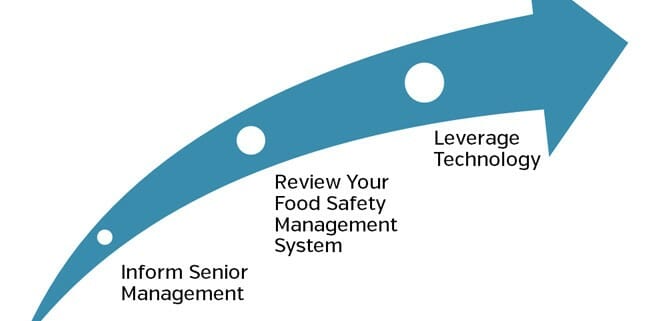3 Steps to Prepare for Unannounced Food Safety Audits
If you have been following our blogs in recent months you will be aware that we called the introduction of unannounced audits as the norm in third party certification. Many of you will now have heard that both the IFS and SQF have introduced unannounced audits last month across their schemes. This is added to the BRC’s option for unannounced audits and the fact that many large retailers already operate unannounced audit programs for their suppliers. Unannounced audits have arrived and are here to stay!
Unannounced audits and the Changing Nature of Compliance
In a previous blog we discussed the changing nature of compliance arising from the shift towards unannounced audits. We introduced the concept of a ‘window of compliance’ to describe the time available to a business to bring its system up to full compliance in the months or weeks before a scheduled audit. This regime afforded the food business operator the opportunity to maintain compliance in a retrospective manner. Tasks, process and procedures which went incomplete day to day could be brought up to date prior to the audit date. Leaving aside the arguments around this, the fact is companies aware of the regime utilized the opportunity to maintain compliance within the ‘window’.
Unannounced audits change this and perhaps in ways which most food businesses are unaware of. The most significant impact arising from unannounced audits is the reduction of the ‘compliance window’ to just one day. This means that companies who have to date operated the above regime now have to take steps to ensure compliance is maintained daily. This is important since it is a fact that food companies may simply fail to close out scheduled actions due to insufficient resources. It may also be due to the fact that food safety systems demand human input and memory to ensure tasks are alerted, completed and closed out. Where systems depend on human inputs to this extent it is evident that tasks will get overlooked.
For many companies, the real impact in the shift to unannounced audits won’t be felt until the first audit is completed. Only then will it come to the attention of senior management, expose gaps in resources and highlight the difficulties of manual paper based systems. But there are steps that can be taken now to reduce adverse impact of the change in audit schemes.
How to Prepare for Unannounced Audits in 3 Steps
Step 1: Inform Senior Management
As with any change which impact on management processes it is important that senior level management are fully aware of the change. Technical management should never assume they are aware or fully understand the change. The reason they need to be brought up to speed is because changes may need to take place requiring resources. Senior management commitment is easier once they understand.
Step 2: Review the Design of your Food Safety Management System
In the BRC’s recent report ‘Food Safety a Global View’, many of the non-conformances picked up during BRC audits relate to tasks and activities not being completed, not being completed fully, frequency of actions and gaps in records. Here we can see that these are issues which arise on a day to day basis and can often be overlooked and forgotten in the busy food production environment. In order to ensure these do not compound into a major or critical issue during the audit you should undertake a review of your system to identify areas where day to day issues need to be picked up and alerted for timely action.
As part of this you should ask your certification scheme for data on the main non-conformances picked up during their audits. This will allow you to narrow your focus. Another good tip is to review your own past audit reports and non-conformances to see your weak points. Again you can focus on these and ask yourself can we take steps to reduce the occurrence of day to day non-conformances.
This can all be done as part of your internal audit program and corrective action procedure. Prepare an action plan and update your senior management especially if investment or additional resources are required.
Step 3: Leverage IT Solutions were appropriate
Following step 2 you may find that much of your internal challenges relate to the fact that when tasks or programs are overlooked there is no mechanism for alerting senior layers in the organisation. You may also find that many issues arise because people are simply not aware that a task needs to be completed. In addition, you may find that some systems are just too unwieldy and poorly designed to manage, conduct and keep up to date. The BRC report suggests this for Internal audits which is a regular contributor of non-conformances stating ‘The most common Non-Conformity in this section relates to the scope, frequency and records of the documented inspections of the factory environment and equipment’
IT solutions offer tools and facilities to address many of these issues including:
- Platforms aligned with the specific requirements of third party certification and retailer standards
- Automation of food safety programs including scheduling, specifications, recording and reporting
- Automatic notification of actions, tasks and jobs to team members to ensure they know in advance when work is required
- Automatic alerting of actions and tasks not completed or overdue
IT automates many of the tasks which currently require human resources to manage and remember when tasks need to be completed. Leveraging these tools ensures compliance is maintained day to day. The above steps will assist you in preparing for upcoming audits that will be unannounced.




Leave a Reply
Want to join the discussion?Feel free to contribute!